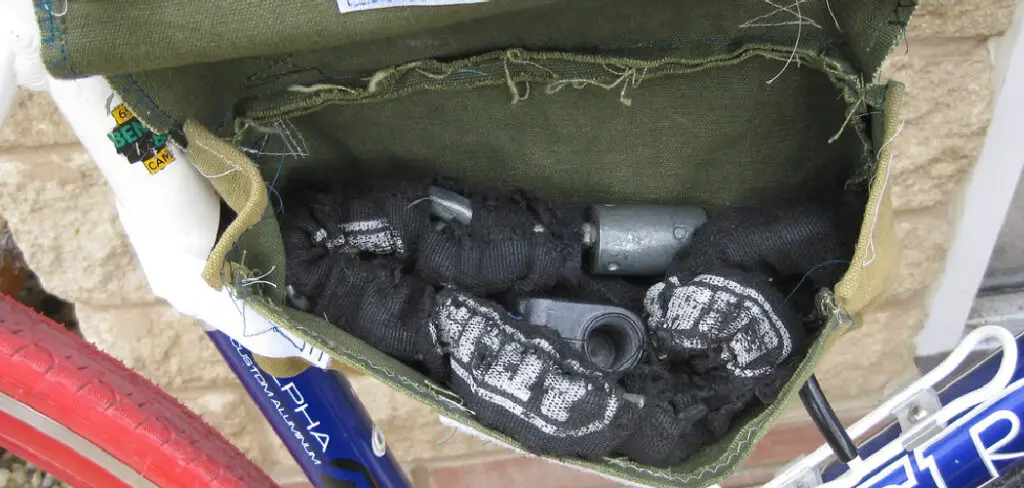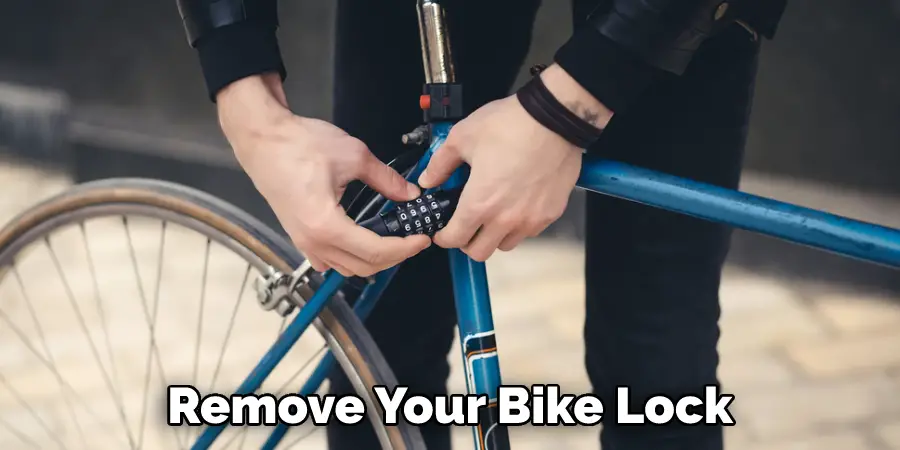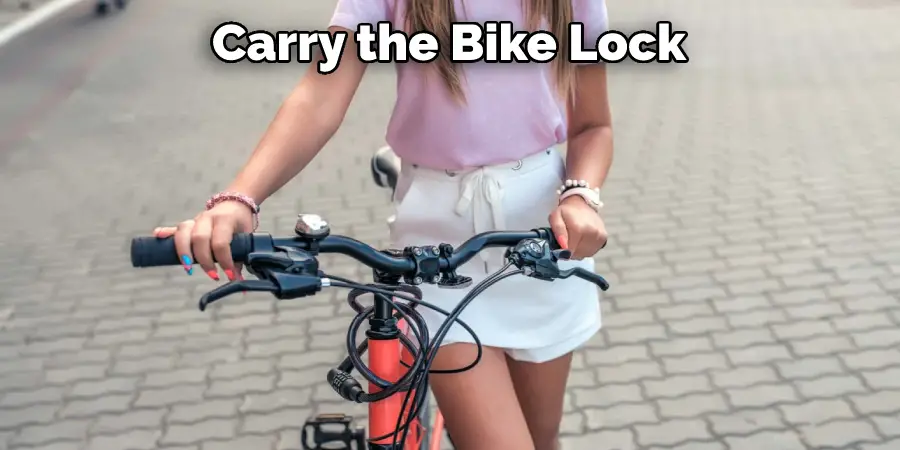Are you looking for ways to carry your bike lock? Do you ever feel like the extra weight and bulk of a traditional bike lock makes it hard to move around or safely store away on your bicycle? If so, then this blog post is just what you need!
Bicycles are one of the most popular modes of transportation around the world. Whether you’re a daily commuter, weekend warrior, or occasional pedaler, biking can be an incredibly freeing and liberating experience.

But before you jump on two wheels for your next ride, it is important to remember that bike security should always come first! A reliable bike lock is your best accessory when riding – it helps protect against theft and provides peace of mind during your journey. In this blog post, we will explore how to carry bike lock. Keep reading!
You will need a few key items to carry your bike lock safely and effectively. These include:
1. A sturdy bag or backpack
2. Some straps or bungee cords
3. A strong set of shoulders
4. A bit of patience and practice
Once you have all of these items, you can start carrying your bike lock easily.
While various bags and backpacks are available specifically designed for carrying bike locks, any sturdy bag or backpack will do. Ensure that your bag is large enough to fit your lock comfortably but not so big that it flaps around and makes it difficult to maneuver. Be careful to choose a bag or backpack made of high-quality materials with strong straps, zippers, and seams.
Once you have chosen your bag or backpack, remove your bike lock from its mounting bracket on your bicycle (if applicable) and securely place it inside the bag. Try to position it in the center of the bag to provide an even weight distribution while allowing space for other items. This helps to keep your lock from moving around and potentially getting damaged while you’re on the go.

Once your lock is safely secured inside your bag, use straps or bungee cords to hold it in place securely. This is especially important if you are carrying a big bulky lock that has the potential to shift position and get tangled up during transport. Be sure to double-check that all of your straps or bungee cords are secure before leaving the house, as loose straps can be very dangerous during transport!
The most efficient way to carry your bike lock is by using your shoulders and back. This allows you to keep both hands free for cycling, navigating traffic, and handling any other items you may need during your ride. To use this method, gently drape your bag or backpack over one shoulder while allowing the strap to rest comfortably on your chest or across your back. You can then adjust the bag as needed until it feels secure and comfortable on your person.
Before hopping on your bicycle and taking off, be sure to practice how you will carry the bike lock with you before doing so in real life! This will give you an opportunity to find a carrying position that works best for you and ensure that everything is securely in place. Be careful not to overstuff your bag or backpack, as this can cause it to flop around and get in the way.

When cycling, it is important to be aware of your surroundings at all times and remain alert while on the road. This applies to how you ride your bicycle and carry any additional items with you, such as a bike lock. Always ensure that your straps or bungee cords are securely fastened and that your bag or backpack is not getting in your way during transport. If this happens, do not hesitate to adjust the bag’s position until you find an optimal balance for both safety and comfort.
If you will be traveling through rain or other wet conditions, it is important to have a system in place to keep your bike lock and bag or backpack protected from the elements. This may include using waterproof bags, wraps, or covers during transport, investing in a quality rain jacket for yourself, or simply making arrangements ahead of time to store your items indoors once you reach your destination.
Cycling can be physically demanding on both the mind and body, so it is always important to take breaks when needed. If carrying your bike lock feels especially taxing or causes discomfort or pain, take a moment to rest before continuing your ride. Remember that how you carry your bike lock should never interfere with how you enjoy cycling!
If you do not need to carry your bike lock with you during your ride, it is always best to keep it securely mounted on your bicycle. This will help you to get in and out of the saddle more quickly, prevent the lock from getting tangled up or damaged, and reduce how much space it takes up in your bag or backpack.
Lastly, remember to take all necessary safety precautions while cycling. Always wear a helmet and reflective clothing when riding, be mindful of how you are riding at all times (i.e., obeying traffic signals), and avoid distractions that could potentially lead to accidents or injuries. If possible, try to leave early to give yourself more time to reach your destination, and be sure to check the weather report before heading out.

With these tips in mind, you can enjoy a safe and successful ride with your bike lock in tow!
Ultimately, how you choose to carry your bike lock is largely a matter of personal preference and what works best for your individual needs and lifestyle. With these tips in mind, however, you can rest assured that you are taking the necessary steps to protect your bike from theft and other hazards properly. Good luck!
If you want to avoid having your bike lock stolen, follow these simple tips and stay vigilant at all times when securing your property. With extra care and attention, you can protect yourself and your investment from thieves.

Whether you use a U-lock, chain lock, or folding lock, the process for locking up your bike is more or less the same. Run the lock through the frame and a wheel, then secure it to a fixed object. It is important to ensure you’re not leaving your bike unlocked in an area where it could be stolen easily.
All in all, it is important to invest in a good bike lock. There are many different ways you can carry your bike lock, and it depends on what is most comfortable for you. Ultimately, the most important thing is ensuring your bike is secure. Try a few different methods and see which works best for you.
Hopefully, the article on how to carry bike lock has been helpful and has given you some insights into how to protect your bike from theft best. Happy riding!